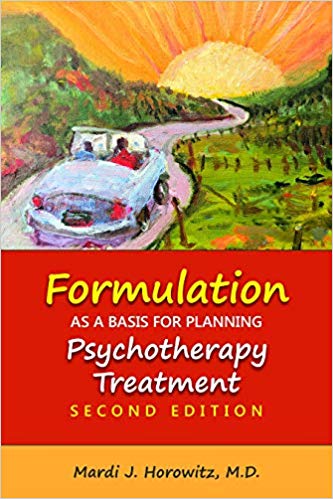Formulation as a Basis for Planning Psychotherapy Treatment by Mardi J Horowitz, MD
The cover photo of Dr. Mardi J Horowitz’s 2019 second edition of Formulation as a Basis for Planning Psychotherapy Treatment is certainly appropriate. Dr. Horowitz presents a clear road ahead to understanding the value of a formulation, and how he develops it for clinical use.

Formulation as a Basis for Planning Psychotherapy Treatment
Dr. Horowitz begins with macro-analytic formulation methods, and their utility in “continuous reduction of ambiguity in understanding complex interactions and enduring patterns of mind, brain, body, culture, community, and current stressors. The book reviews eleven parts of formulation methods that are almost universal. It presents a starting place for developing a formulation, considers the phases of treatment, and then gets down to the brass tacks of the book - the Configurational Analysis.
The book takes the reader through the five elements of the Configurational Analysis: Phenomena, States of Mind, Topics and Obstacles, Self and Relationships, and Integration and Therapy Technique planning. Each of these is broken down into clear elements with both technical guidance and clinical examples to build the readers foundation of knowledge, and confidence in applying the techniques.
“Formulation as a Basis…” is extraordinary. It is of use to the beginner, who is just starting to appreciate the importance of a formulation and how to build one. It is of use to the seasoned practitioner, who wants to sharpen or expand their formulation approach.
Two added notes. First, I presented lectures to medical students and residents using this book as source material. Dr. Horowitz was kind enough to allow me to distribute one of his many helpful tables to the class, which facilitated the learning process for the young physicians. Second, Dr. Horowitz has another book (“A Course In Happiness”) which presents the process of using the formulation from a patient-based point of view. The two books are a wonderful matched pair for the clinician who wants to better understand how their clients could be using the Configurational Analysis.
Highly recommended.
